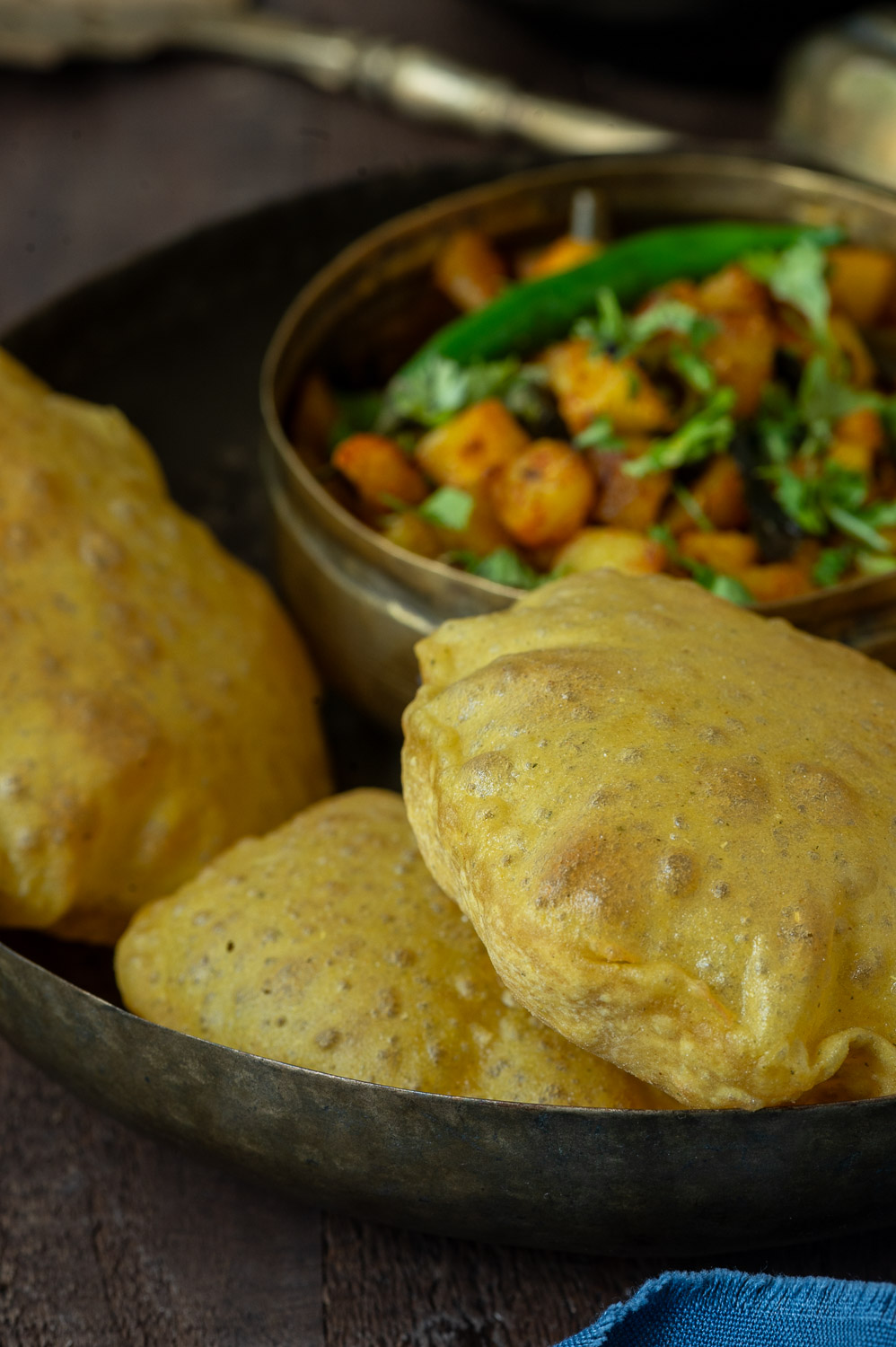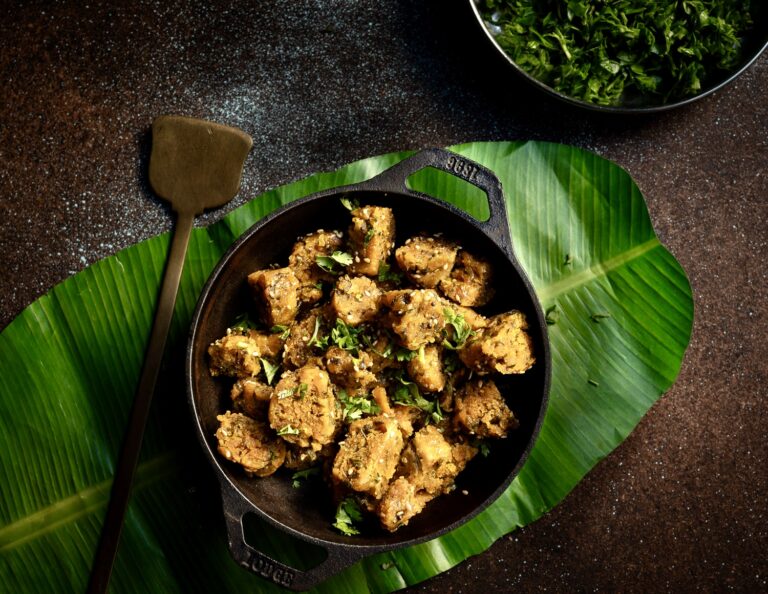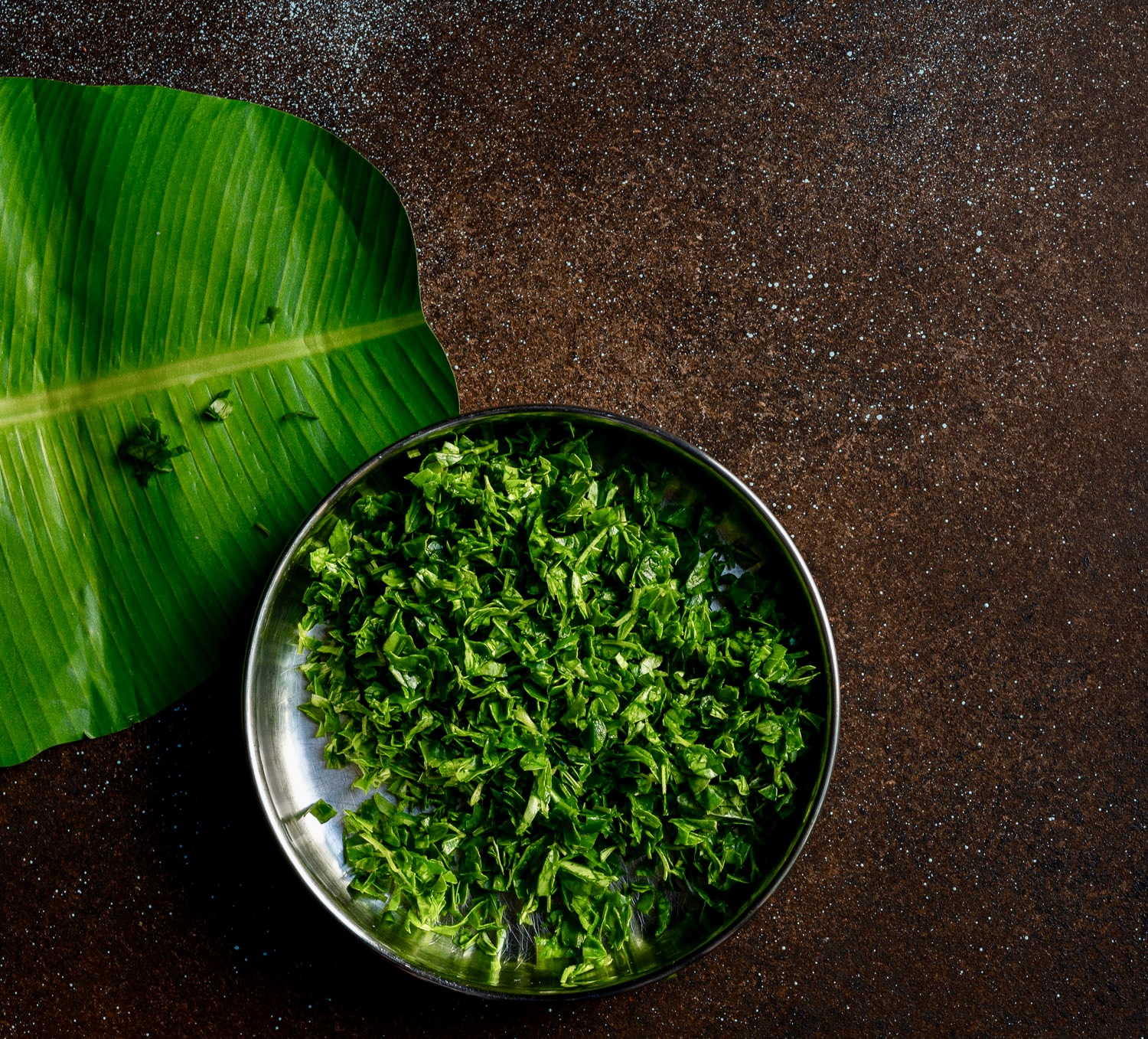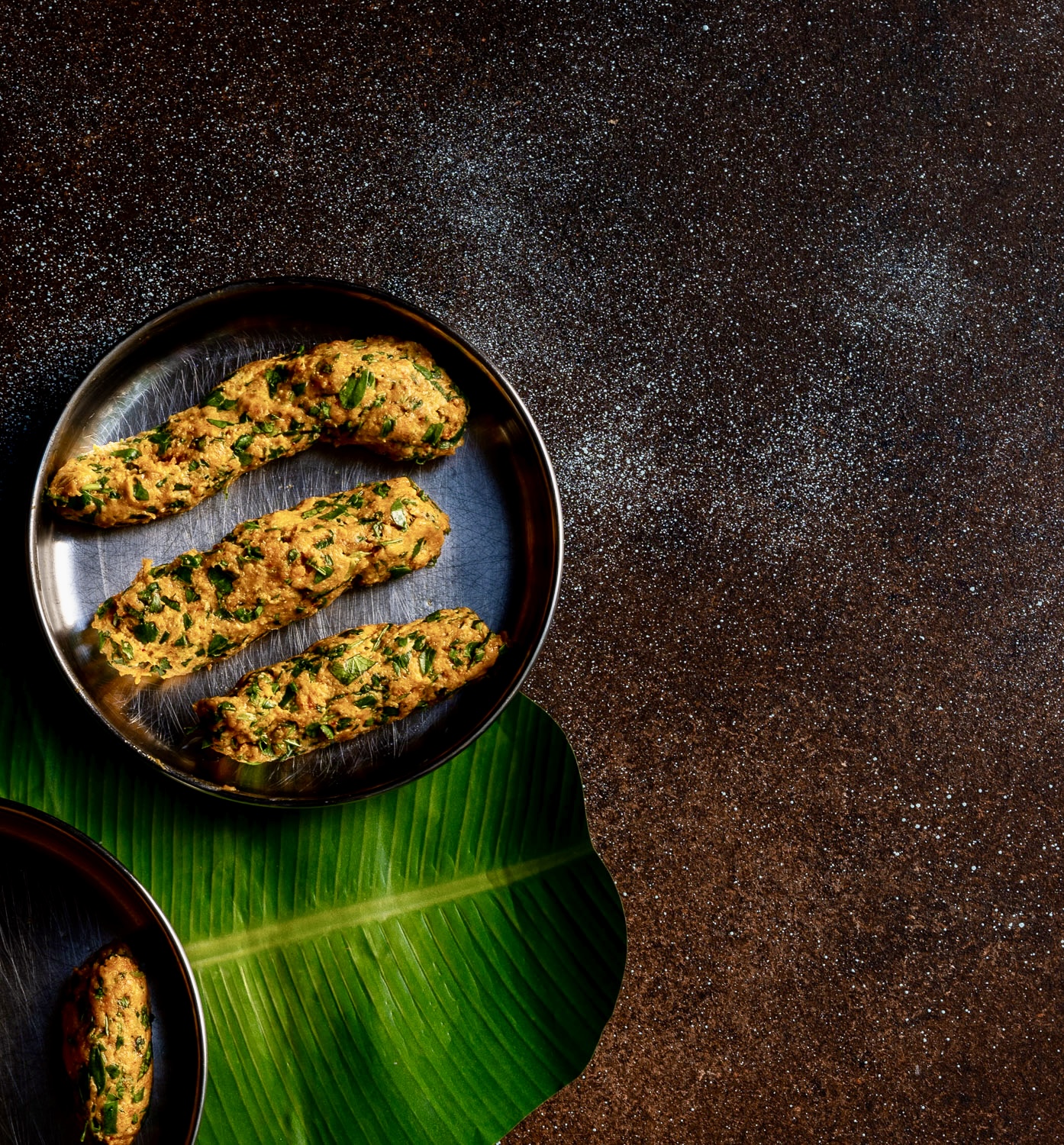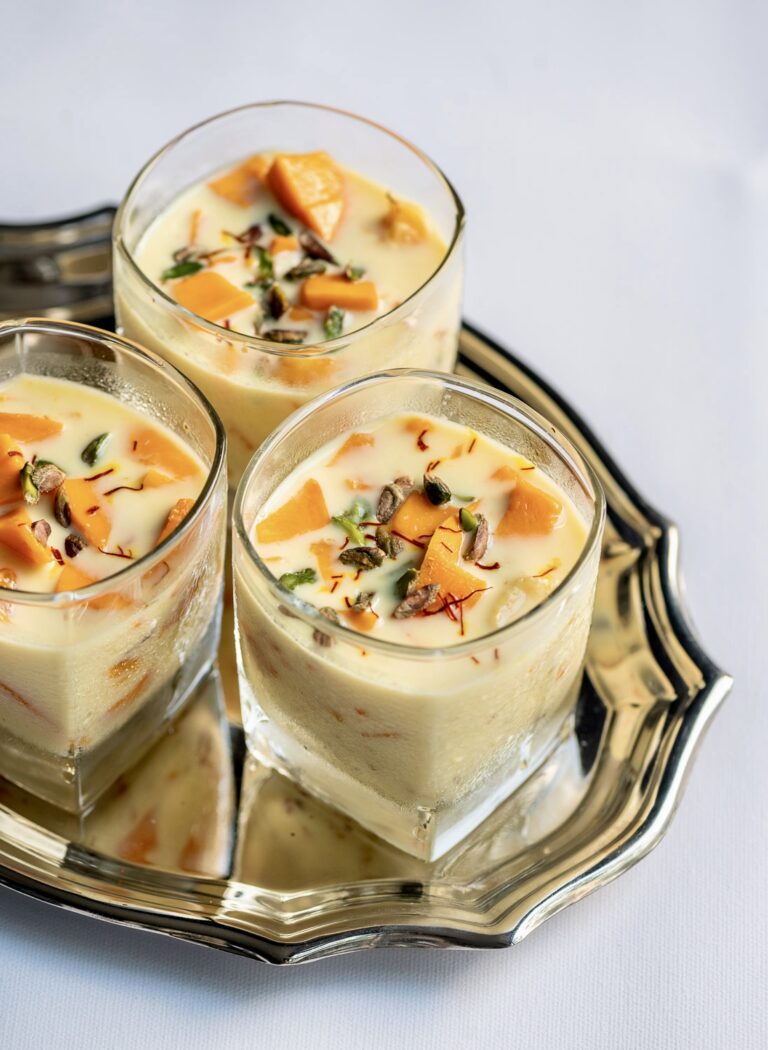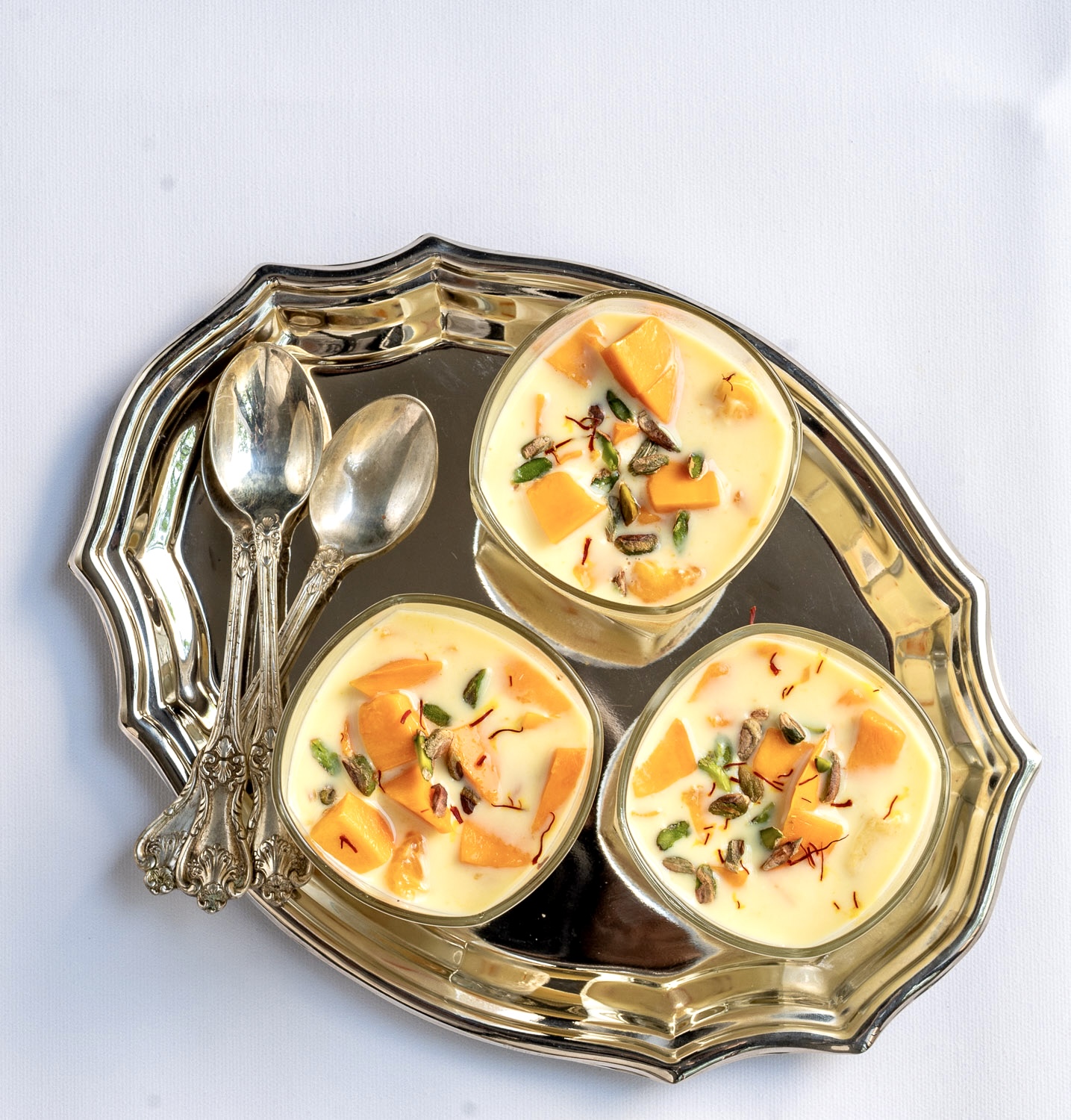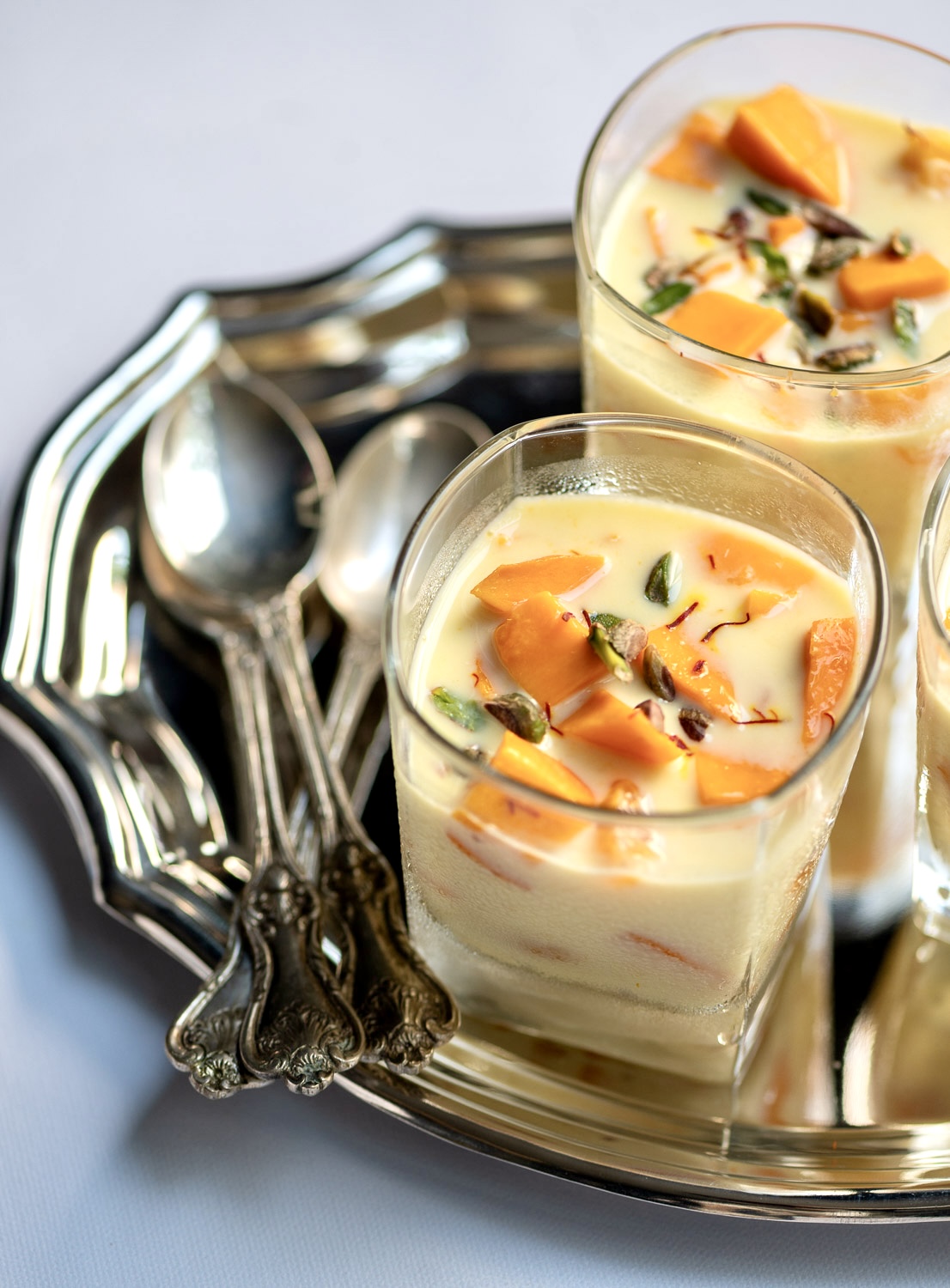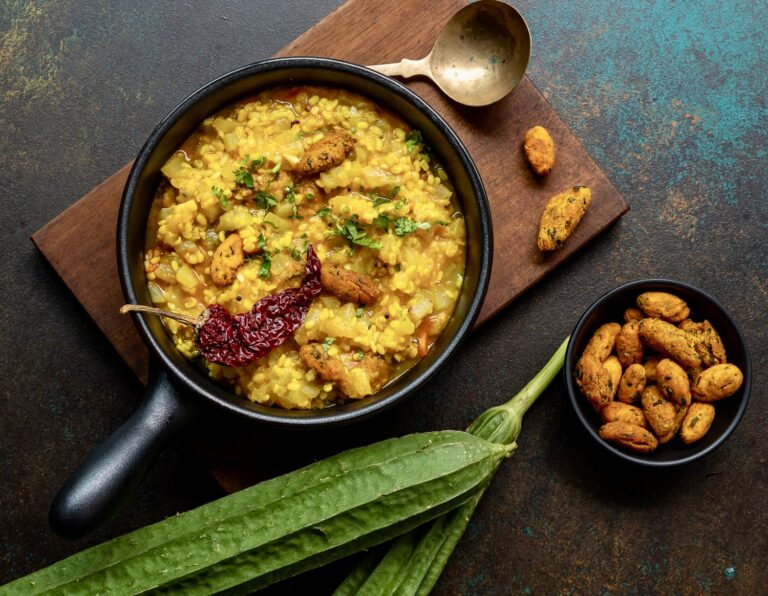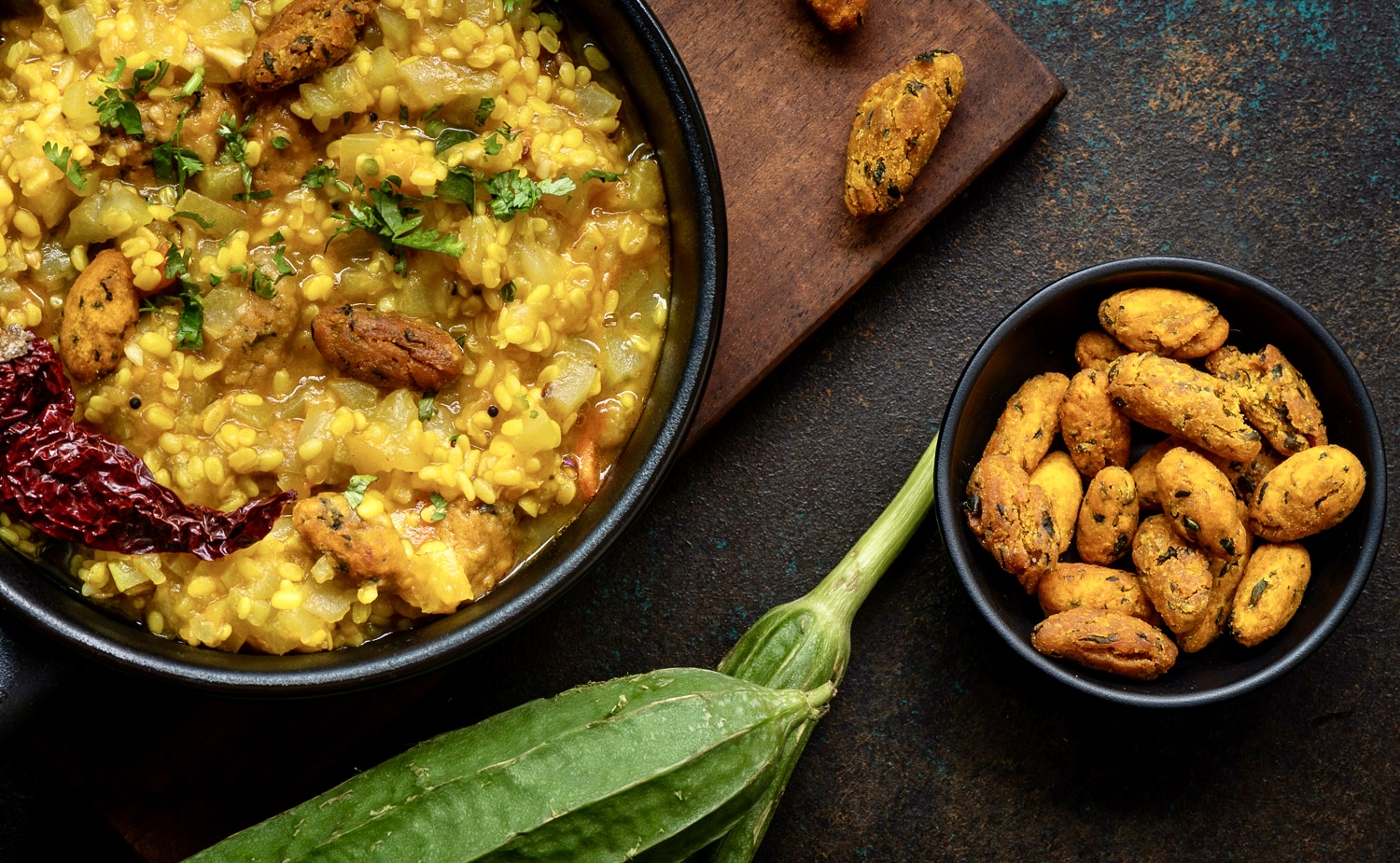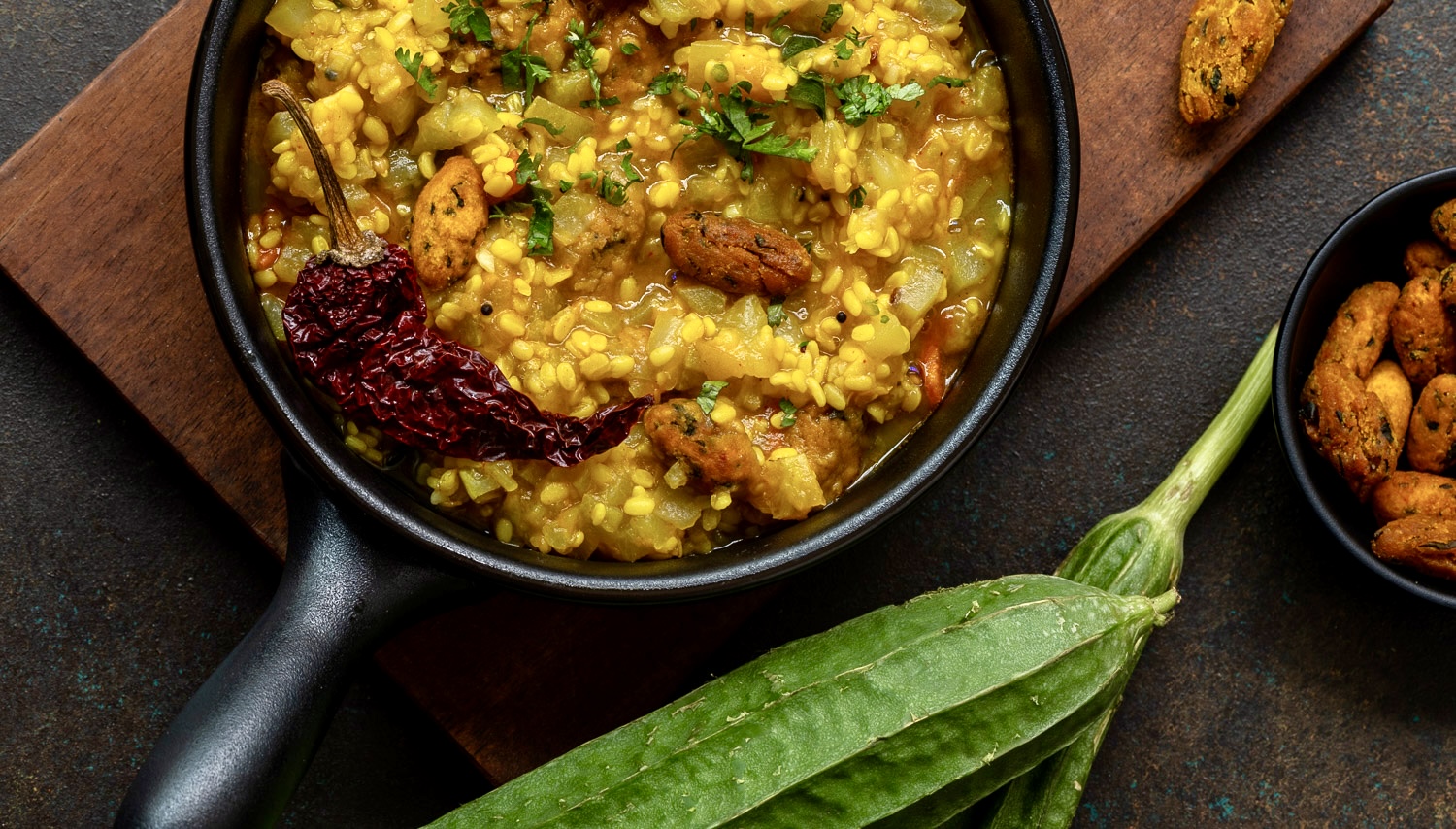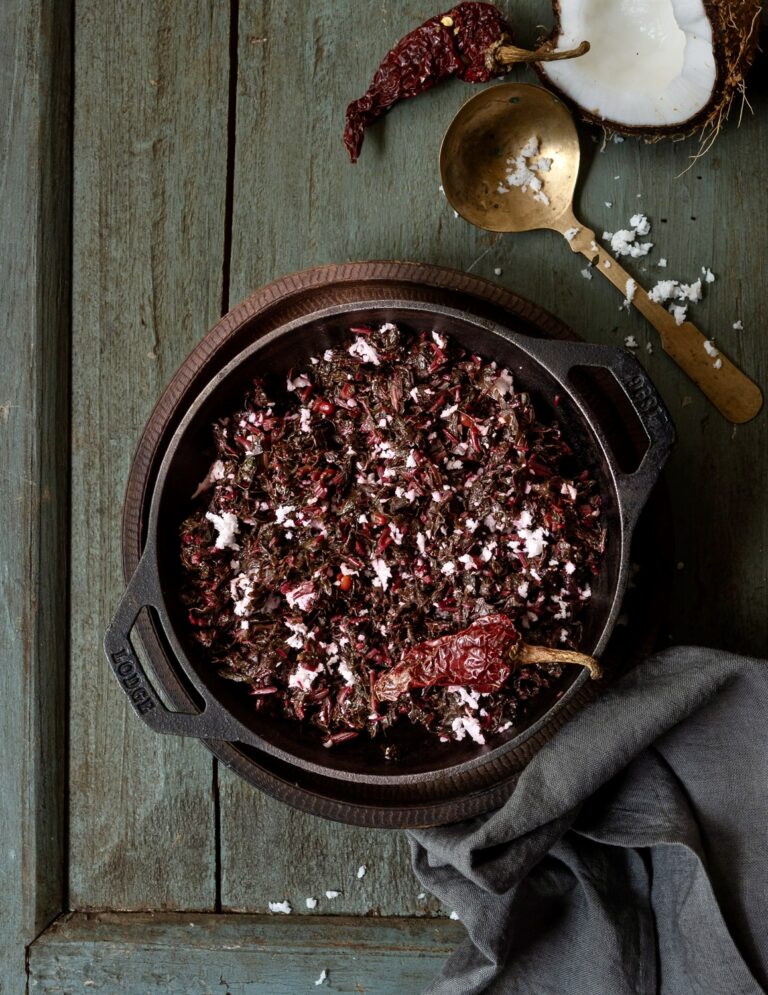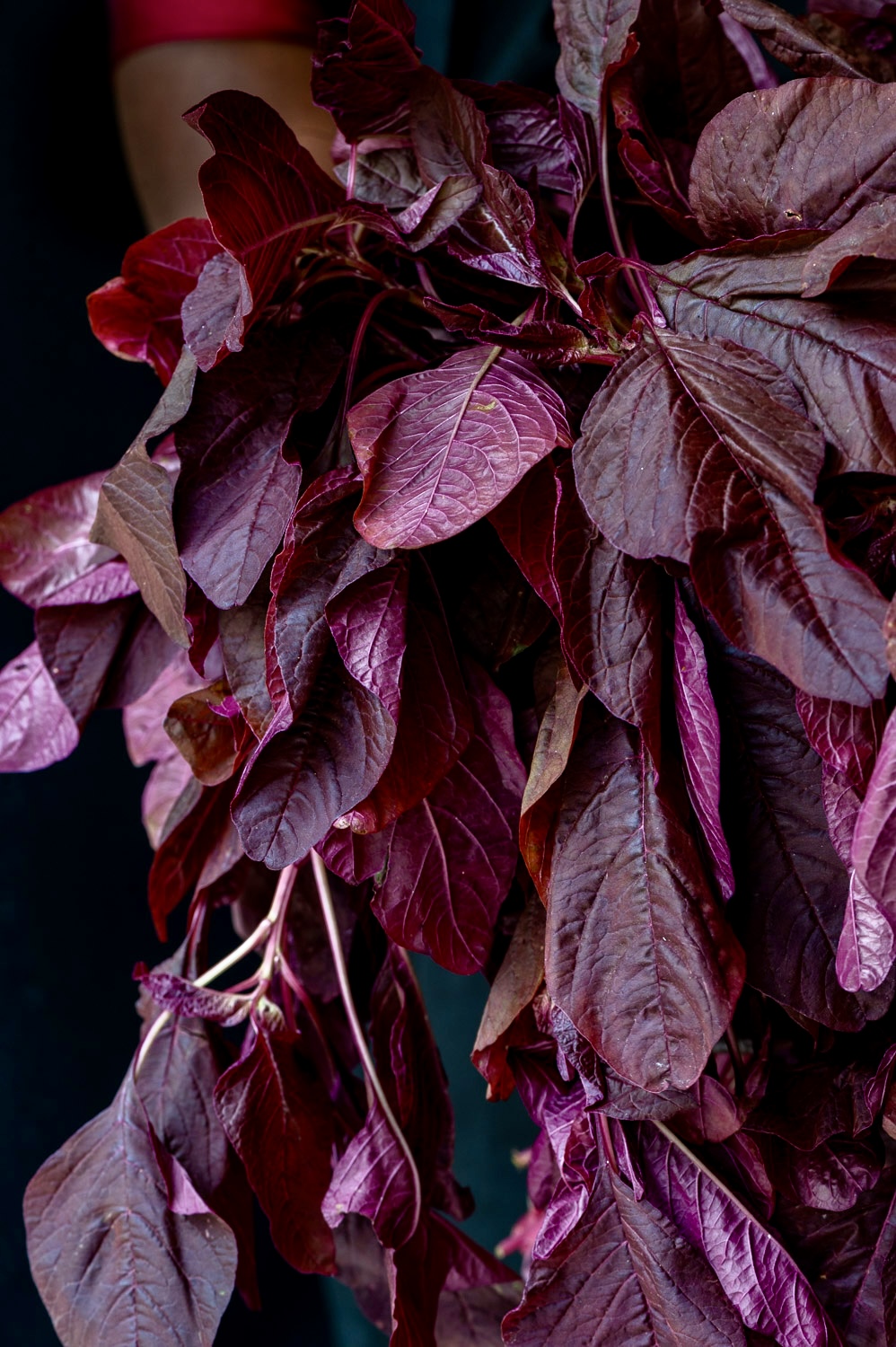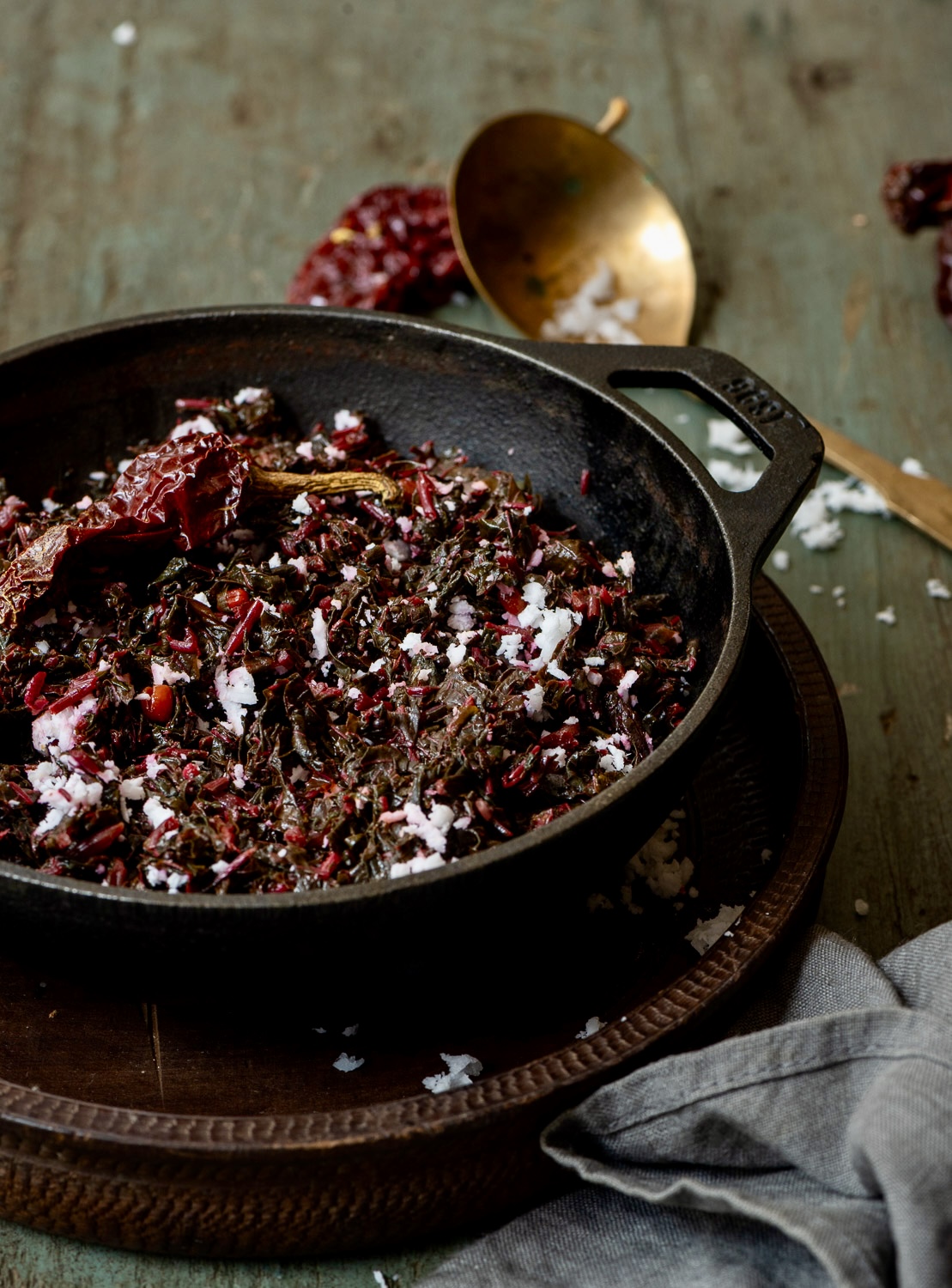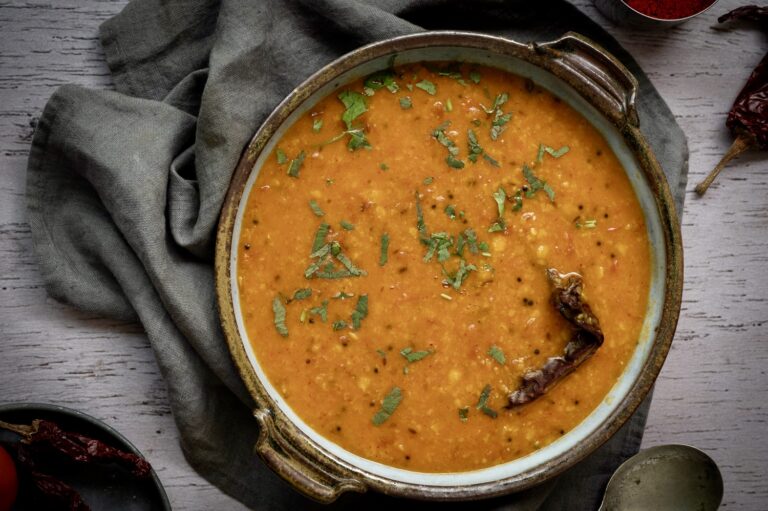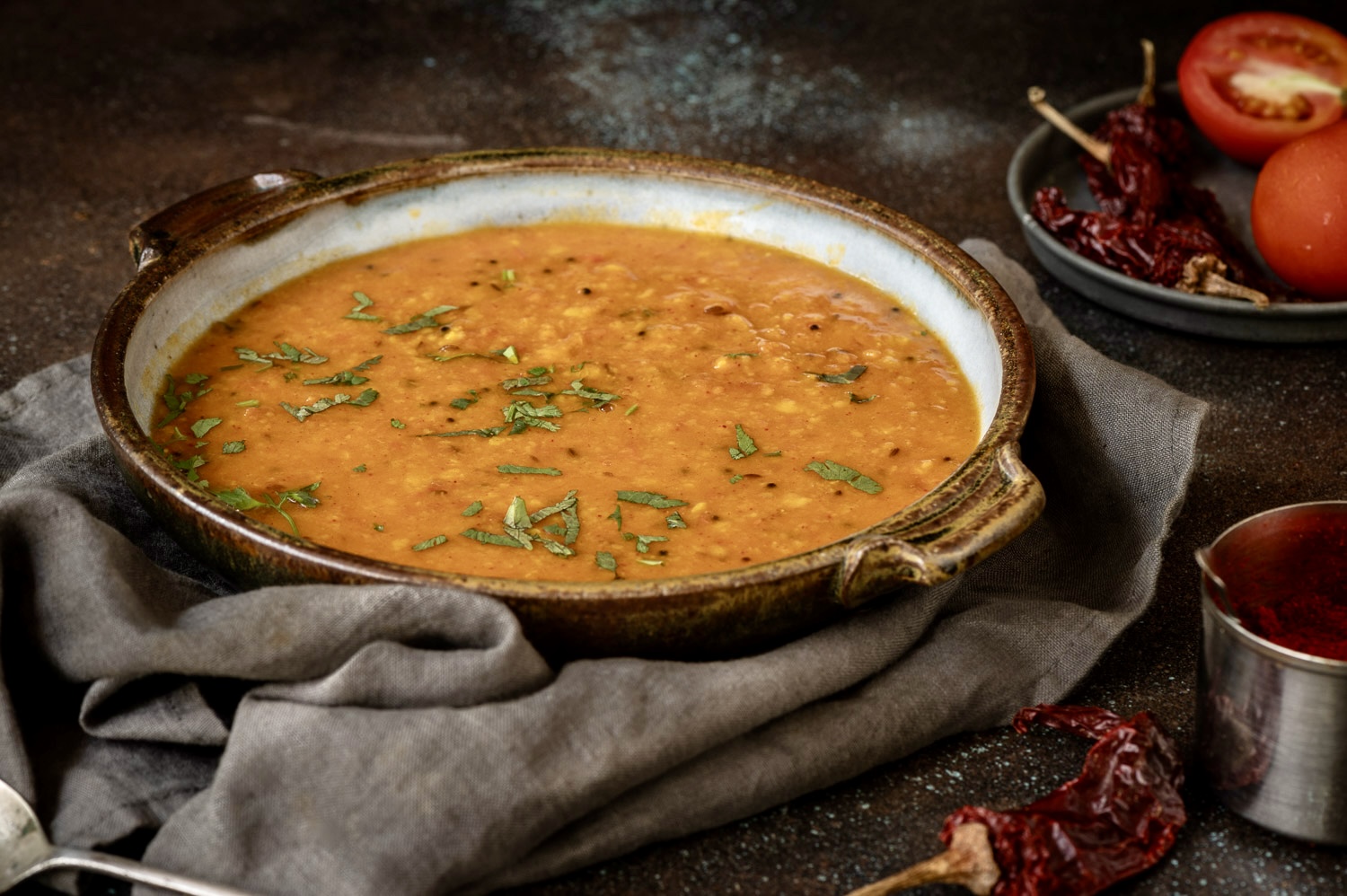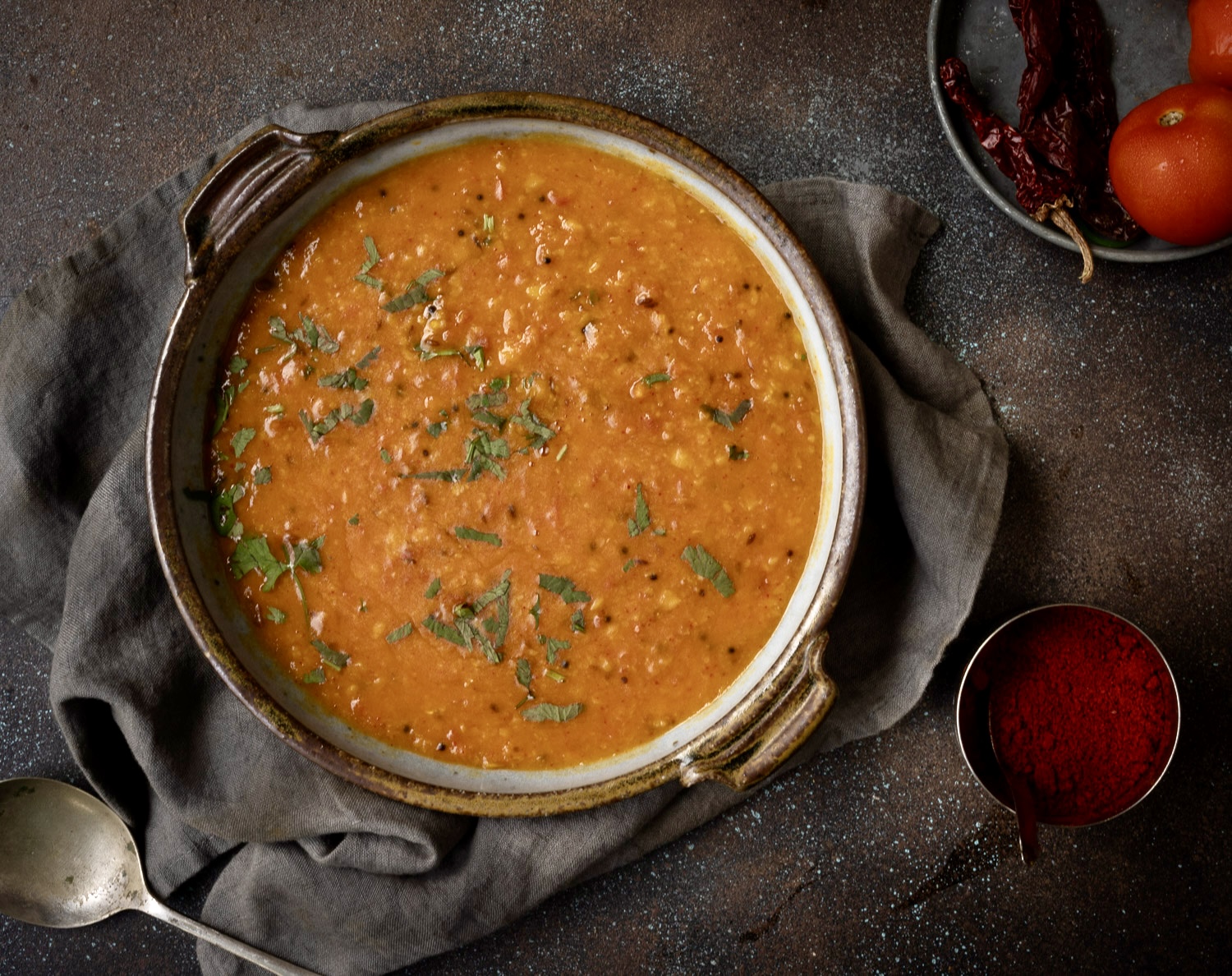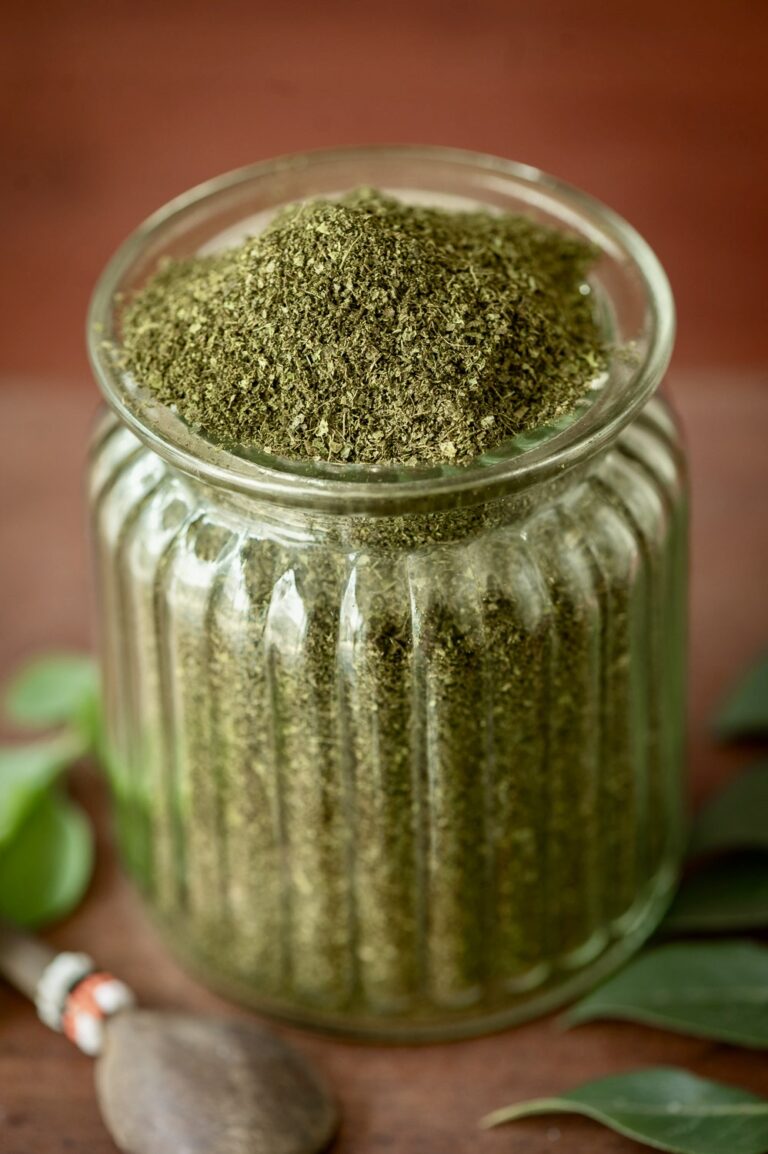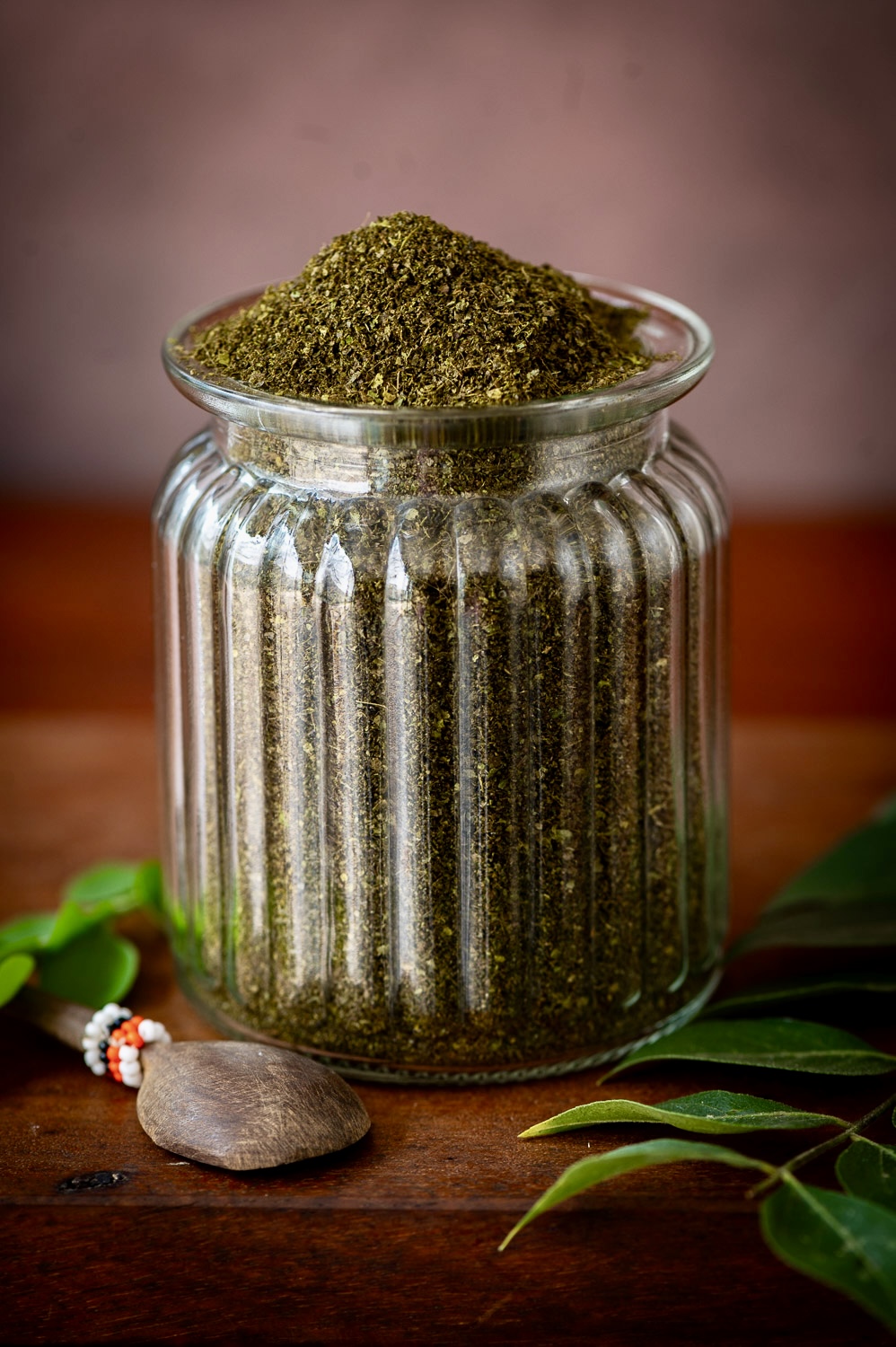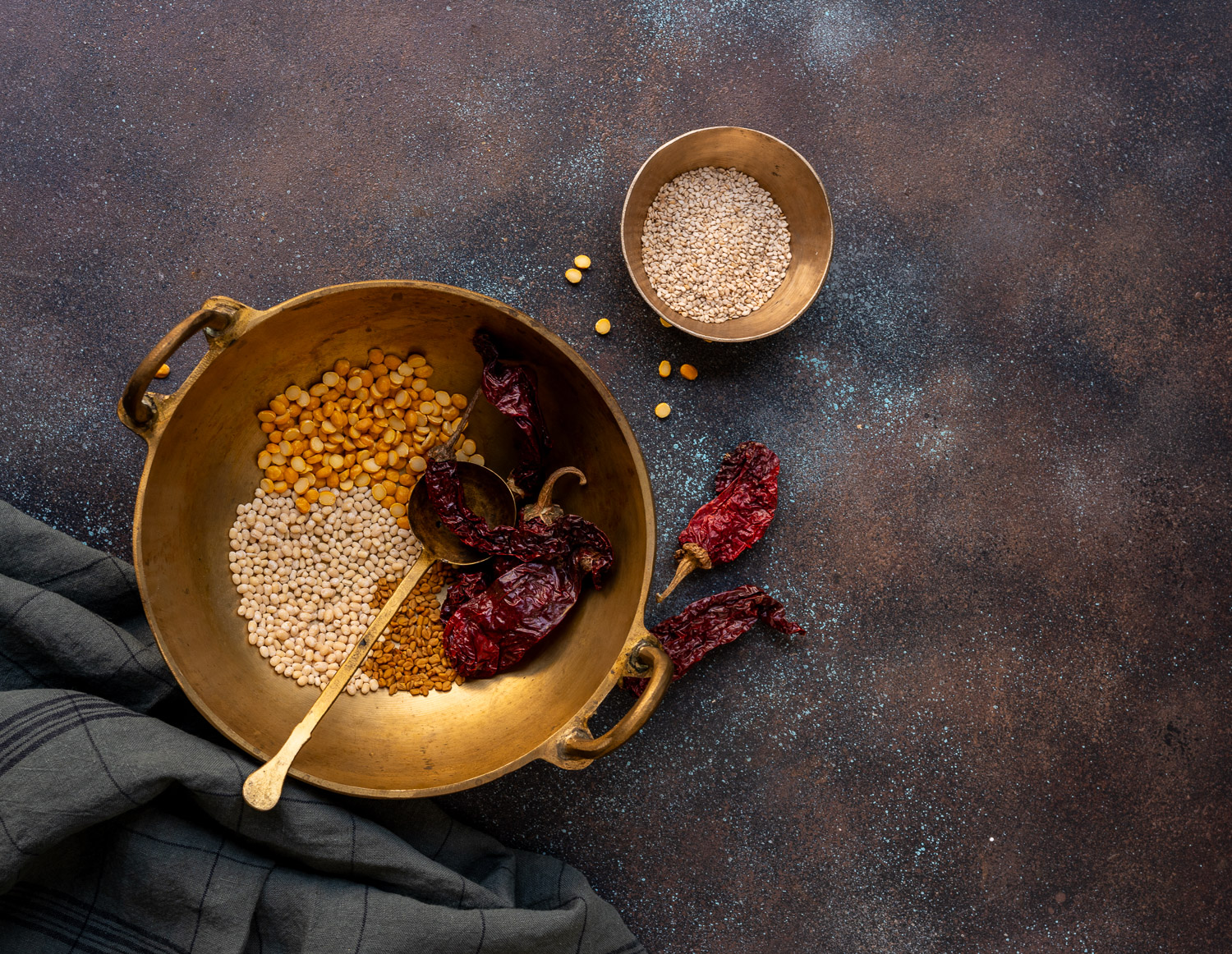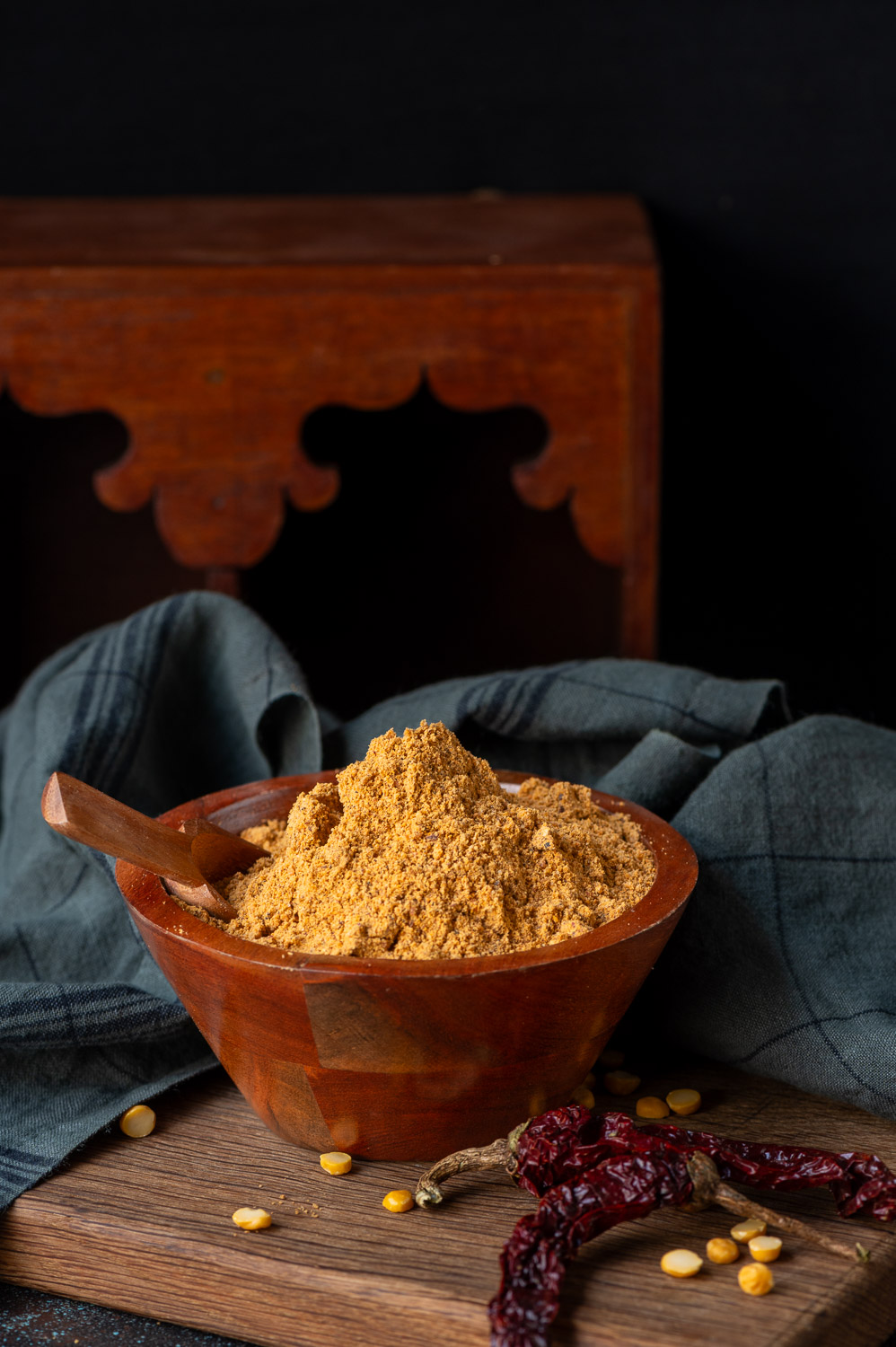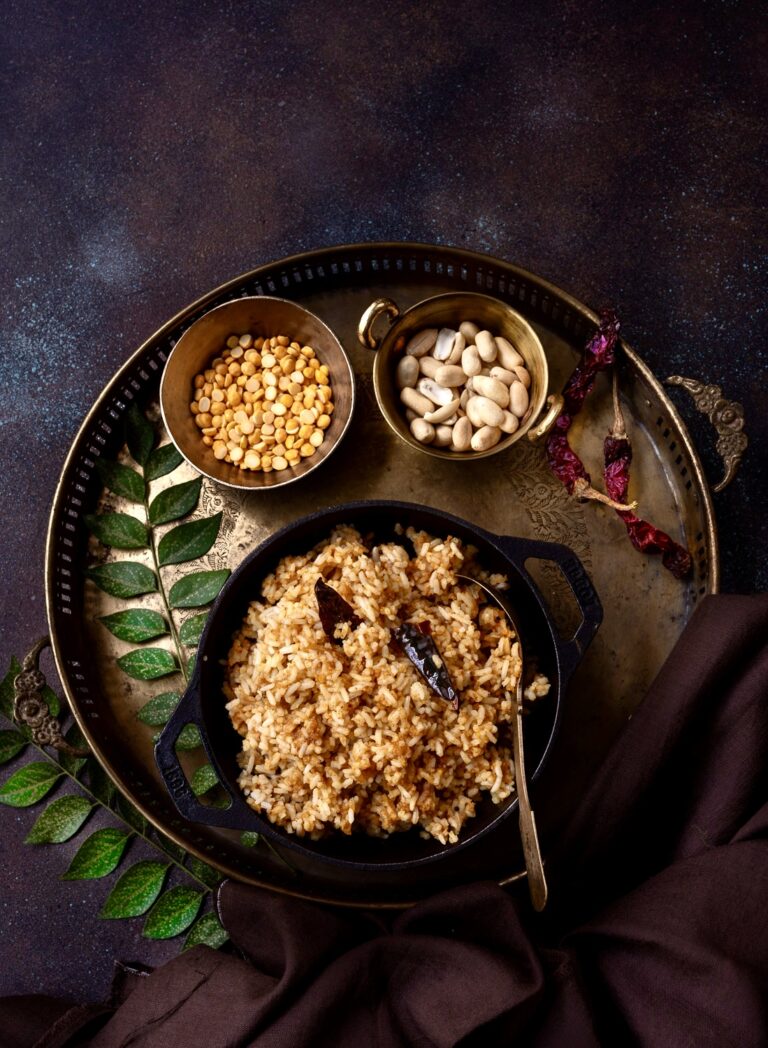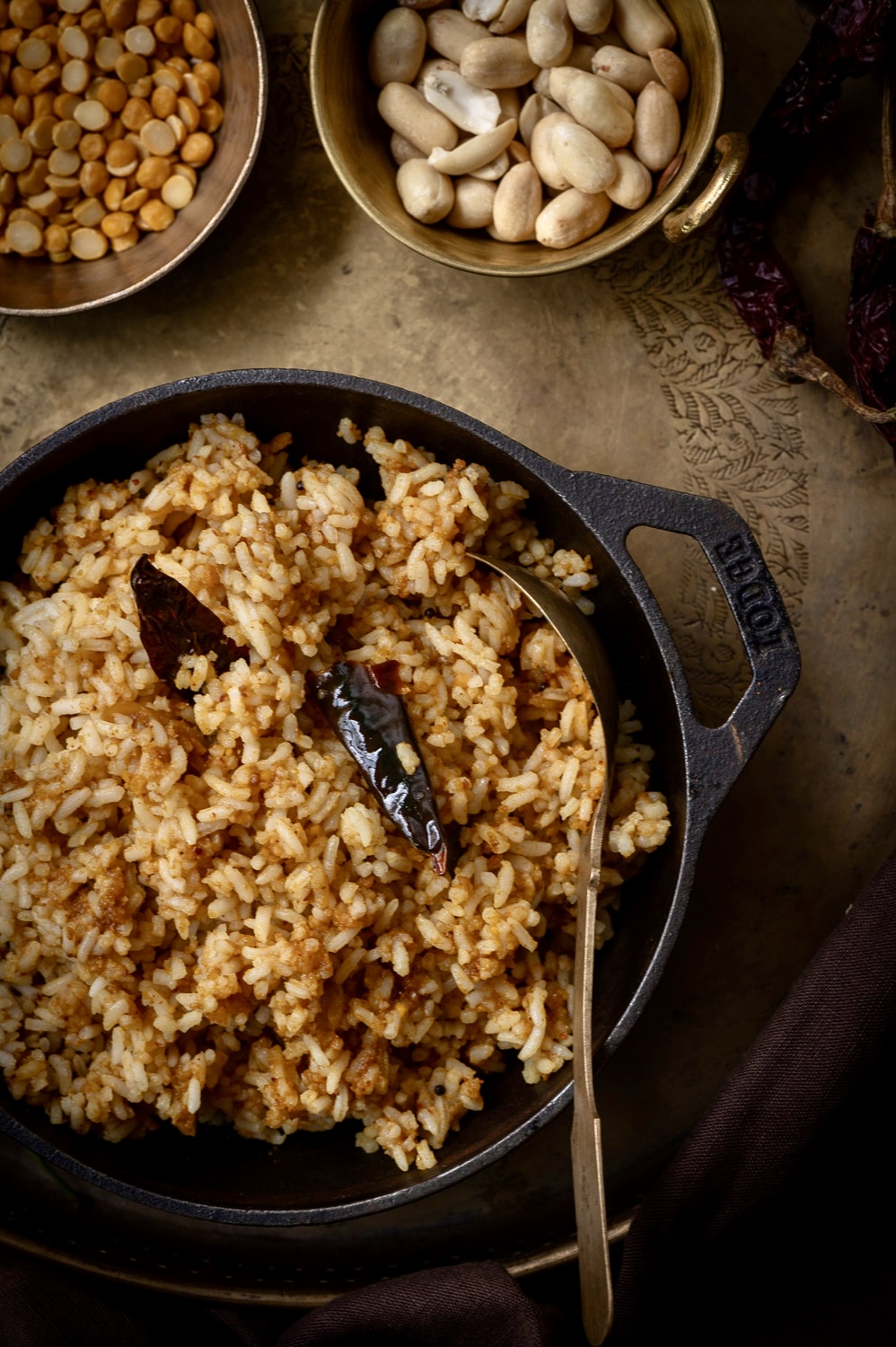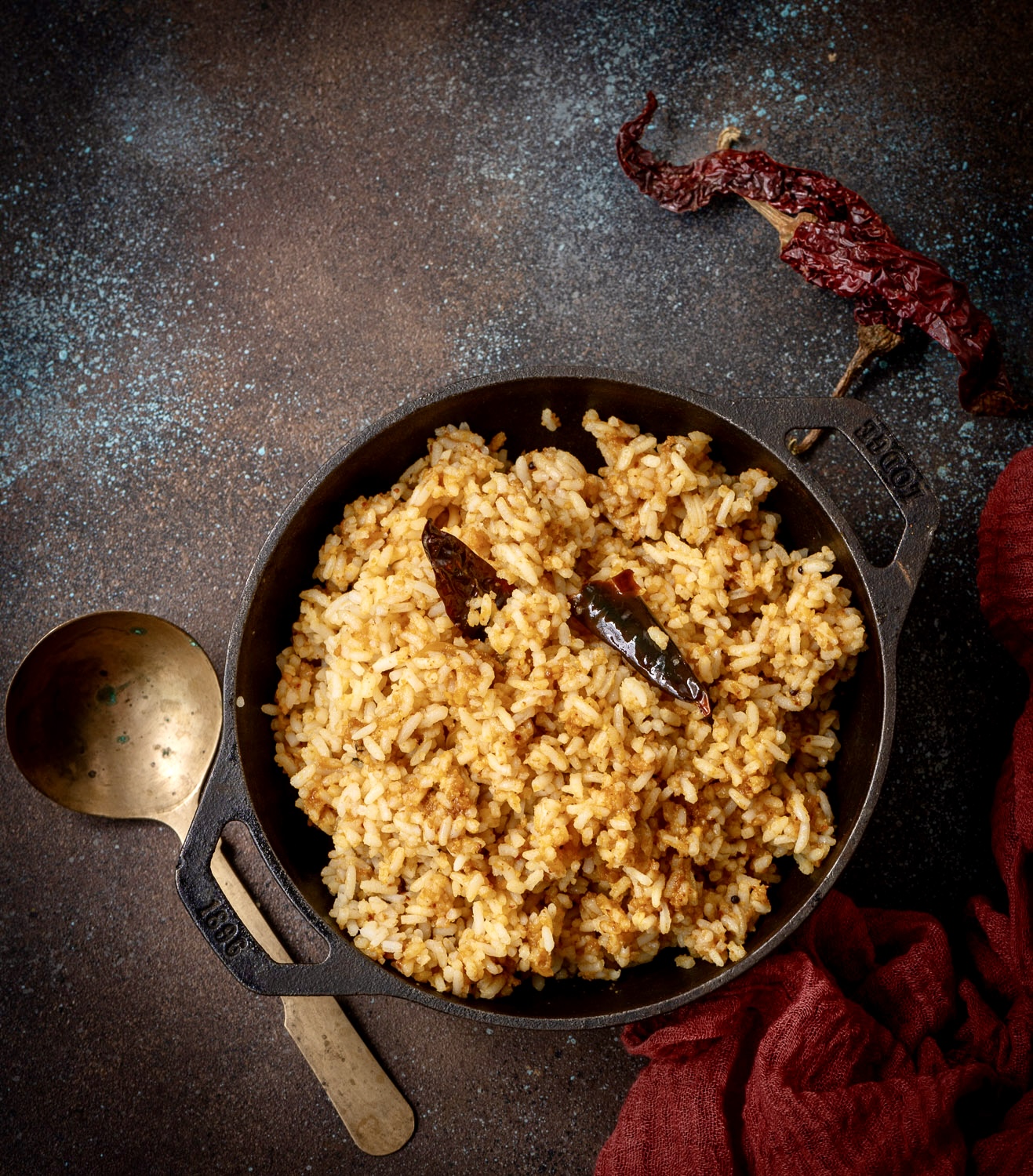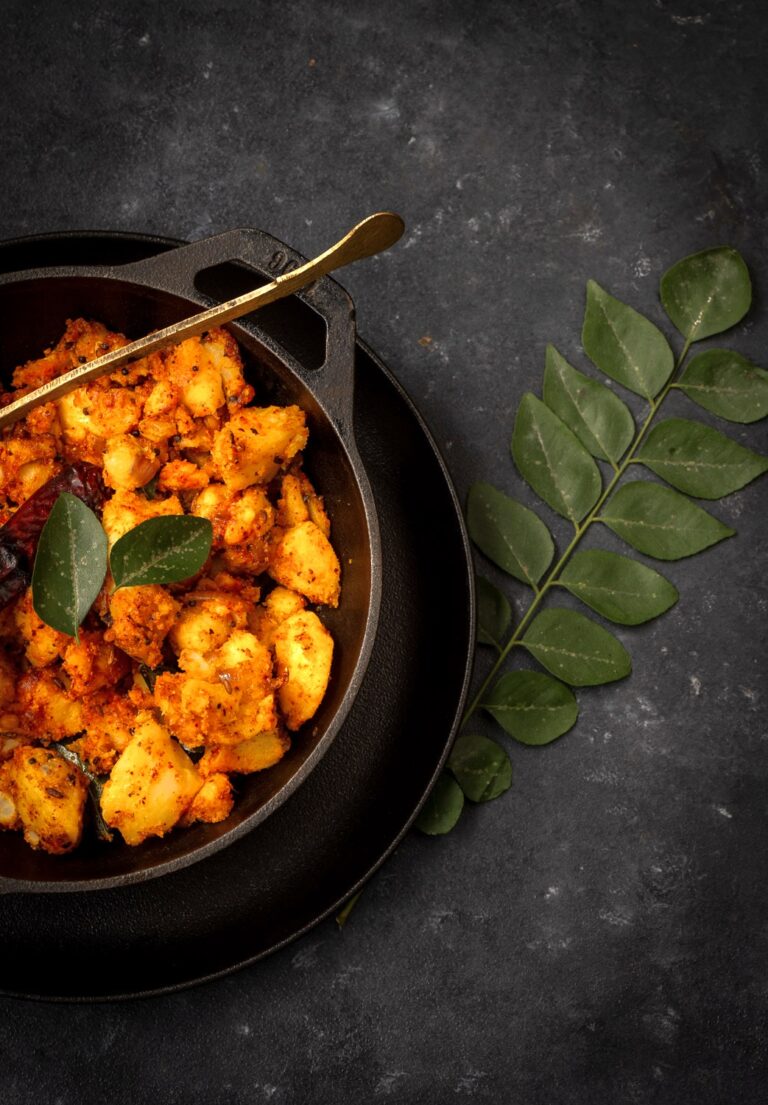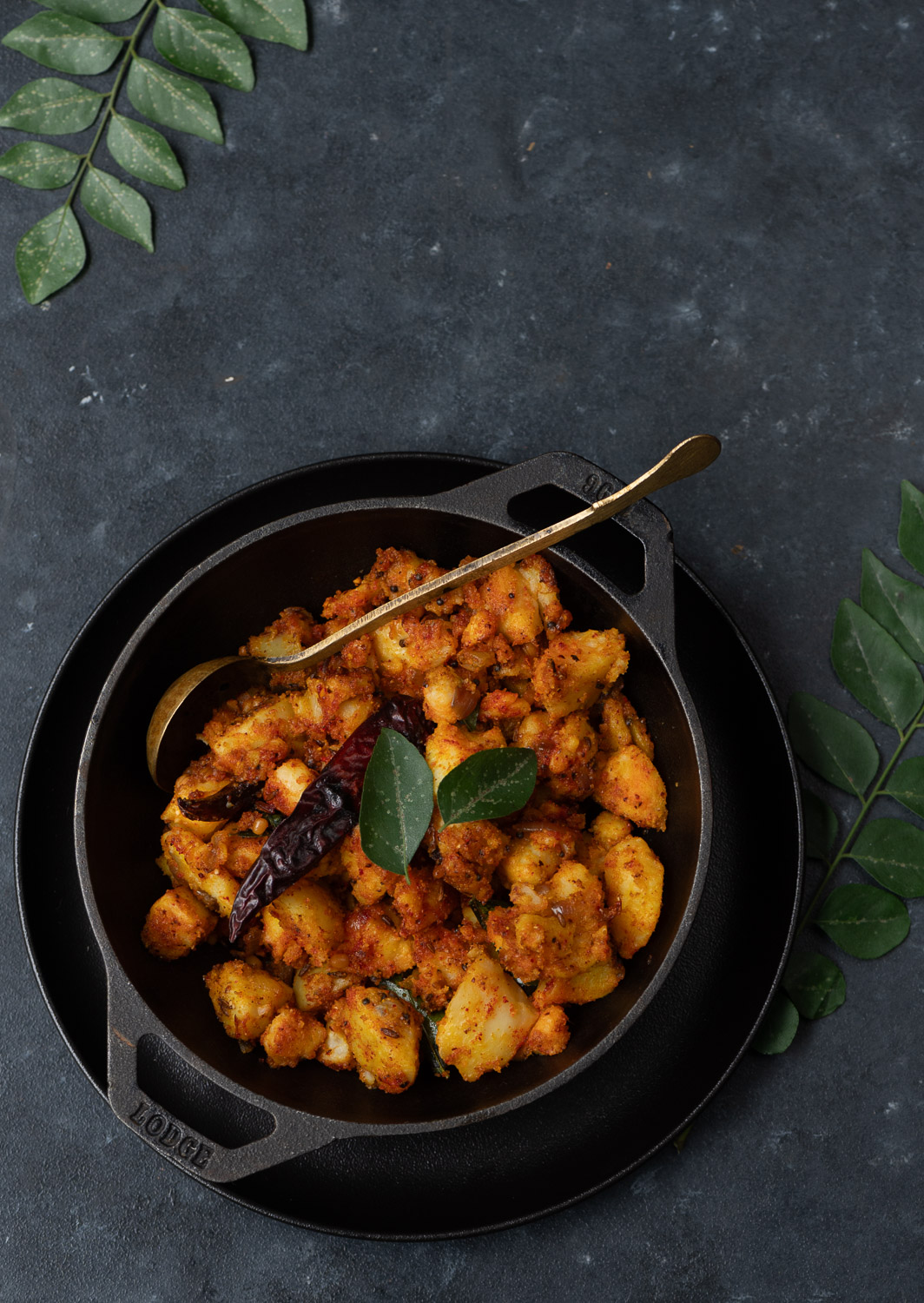Aloo poori used to be a regular dish served in daily meals throughout India. That’s how I remember it. Increasingly, I notice that it has become more of an item enjoyed at celebrations. This is probably because people have become more health conscious, or at least that is what I believe based on what I observe. Poori is a kind of fried flatbread, usually puffed up and on the oily side. “Aloo” means “potato” in Hindi, indicating the curry it is eaten with. Together, they are delicious, and I understand both why people used to want to eat aloo poori frequently earlier, and why it plays a role in feasts today. Here, I share a masala aloo poori recipe.
As I said, aloo poori is really a pan-Indian dish. I am particularly familiar with two versions: Gujarati style and Tamil style. In Gujarati, the dish is known as “batata poori” (“batata” means “potato”), while here in Chennai I have encountered it in many restaurants under the name “poori potato”. There may be a Tamil name for it, of course. I have also enjoyed some more versions around the country. Every time I’ve been to Kolkata, I’ve ordered what they call “luchi aloo”, which happens to be a dish I really love. Marwaris often eat pooris with aam ki loonji, a mango condiment that’s neither a chutney nor a pickle, yet somehow both at once. It’s another interesting combination, and I’ll be sharing that recipe soon.
Regular poori, rather than spiced poori, is eaten everywhere, but I want to share a typically Gujarati version, which is masala poori. Traditionally, the poori and potato combination is eaten alongside a third party: a kheer. A kheer is a kind of milky dessert you may have encountered on this blog before. The savouriness of the masala poori contrasts well with the sweetness of the kheer. Potatoes always make people happy, of course. All together, masala poori with batata and kheer are just unbeatable.
I have shared many flatbreads from the Gujarat region earlier, most notably in this post [hyperlink] featuring a number of variants. They are usually made petite and two-bite sized. Pooris are also made small, but unlike some other flatbreads, like theplas [hyperlink], they are not travel-friendly. They are meant to be eaten fresh.
In fact, they aren’t even flatbreads, technically, since the whole proof of a well-made poori is that it fluffs up in the oil, rises and turns into a hollow ball. A flat poori is one that hasn’t been prepared well. A puffy poori is achieved when the dough has been made to the right consistency, neither tight nor soft. It needs to be pliable and well-massaged.
I learned the nuances of making a good poori from my mother. She showed me how they should puff up perfectly and always be served hot. Here, I’ve chosen to keep the potatoes very simple, since the pooris themselves are spiced and the kheer brings in its own rich range of flavours to complete the meal.
I also associate potatoes with my brother, and have many childhood memories of him preparing batata nu shaak or batata poori for us.
He genuinely enjoyed being in the kitchen. Although he was very macho, and was an athlete too – a rowing champion, in fact – he showed us early on that there’s no shame in a man cooking or doing household work. He loved to make the potatoes while our mother handled the pooris, and my sister and I would sit happily at the table, waiting to be served.
When I think about this now, it occurs to me how cooking together – even watching loved ones cooking, everyone being in the kitchen together – was a kind of bonding activity for us. We often talk about the importance of eating meals together as a family – but why not extend that to preparing them together, too? Such little things are the stuff of quality time in the moment, and such precious memories down the line…
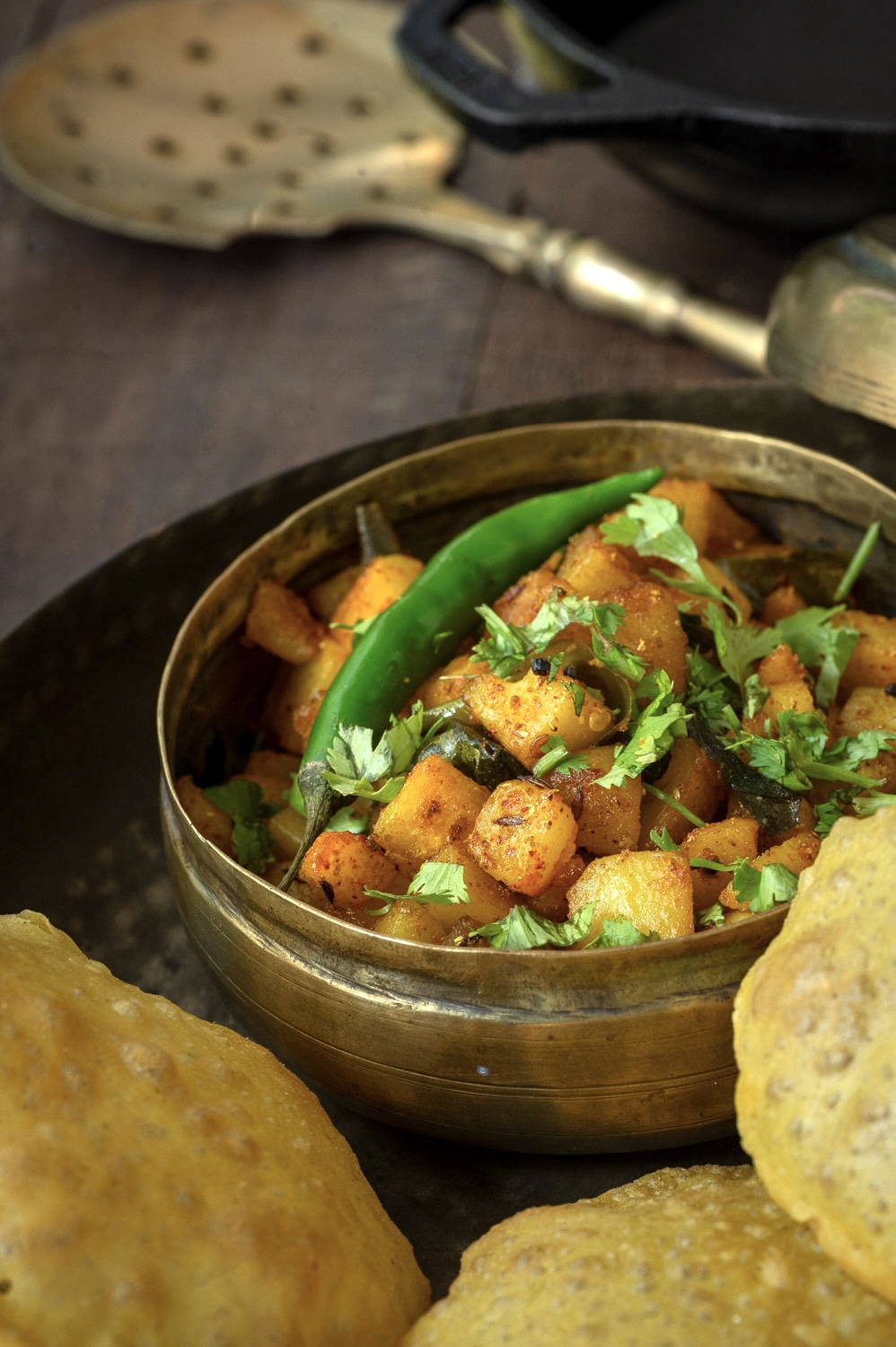
Masala Poori With Aloo
(Serves: 3-4)
Masala Poori
1 ½ cups whole wheat flour
1 heaped tablespoon chickpea flour
1⁄3 teaspoon turmeric powder
1 teaspoon dhaniya (coriander) powder
Salt to taste
¼ teaspoon kasoori methi (fenugreek leaves) powder
1 pinch asafoetida
1 tablespoon curd
1 tablespoon oil
1 teaspoon ginger-green chili paste
1⁄3 cup water
Take the flours in a bowl. To these, add all the spices, along with the curd and the oil. Mix well using your fingertips and slowly add water as required to make a medium-soft dough.
Massage the dough well so it becomes smooth. You can use the help of a little oil on your palms to achieve a good dough.
Cover and set aside.
Heat the oil for frying. Make small rounds and start by rolling each one out.
Once the oil is hot enough, drop a rolled-out dough piece into the hot oil gently. Soon, it will fluff. Flip it over so it is cooked well on both sides. Repeat for all the dough circles.
Your masala pooris are now ready to be served hot.
Potato
350 grams potato
Salt to taste
2 tablespoons oil
1 teaspoon mustard seeds
½ teaspoon cumin seeds
¼ teaspoon turmeric powder
1 teaspoon cumin or coriander powder
½ teaspoon ginger paste
½ teaspoon green chilli paste
Wash, peel and cut the potatoes into small pieces.
Heat a kadai and add oil. Once the oil is hot, add the mustard seeds and cumin seeds. After they begin to splutter, add the potatoes. Stir and add salt and turmeric. Mix again, then cover with a lid. Allow to cook on a low flame, stirring occasionally until the potatoes are tender and cooked.
Now add the remaining spices and mix well. Cover and allow to cook once again for a few minutes until all the flavours come together well.
Garnish with coriander leaves and serve hot with pooris.
Don’t forget that you may want to enhance your meal even more with some kheer. I have shared several kheer recipes on this blog. Feel free to prepare one of your choice and serve it along with this masala poori with aloo!
